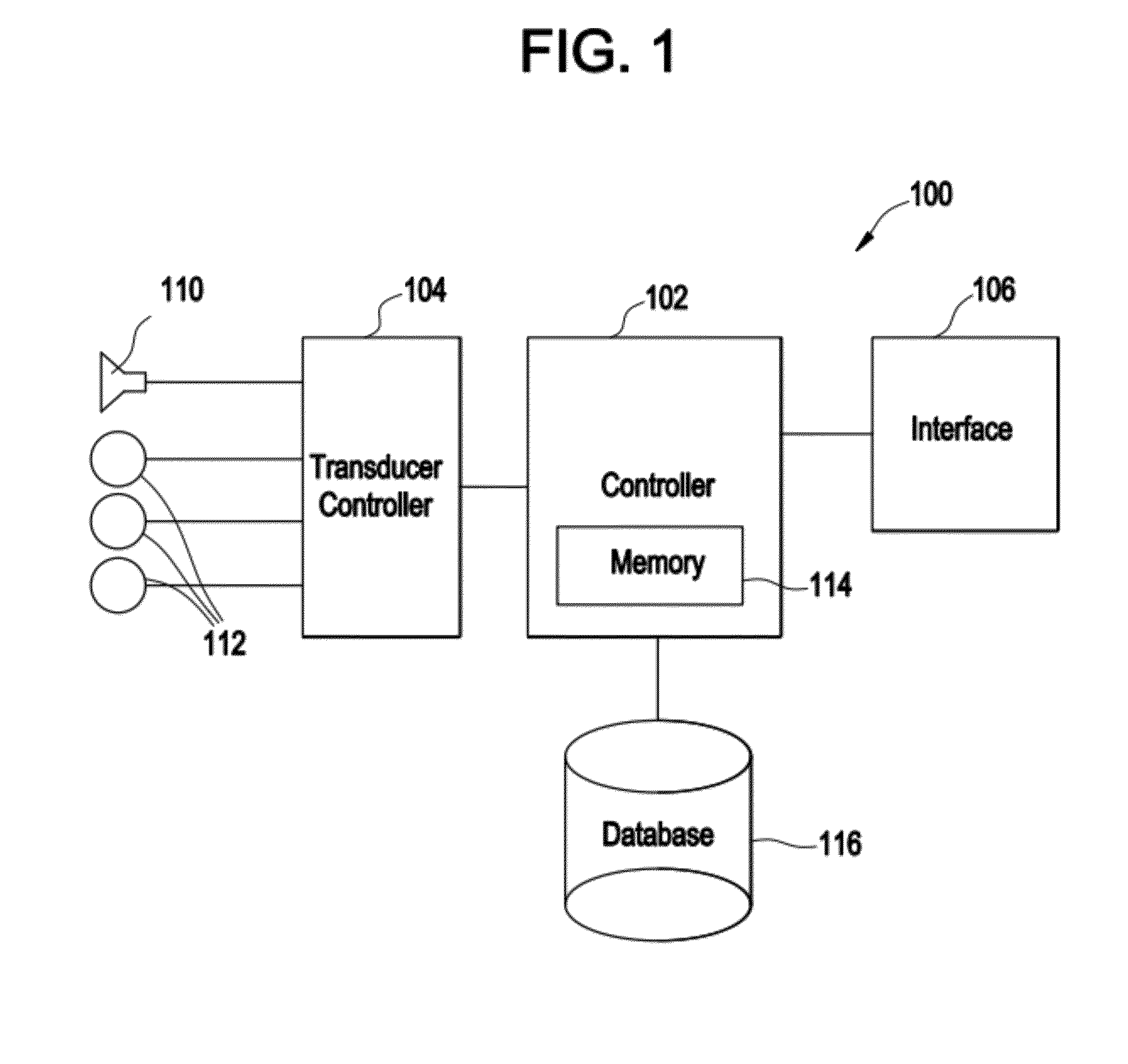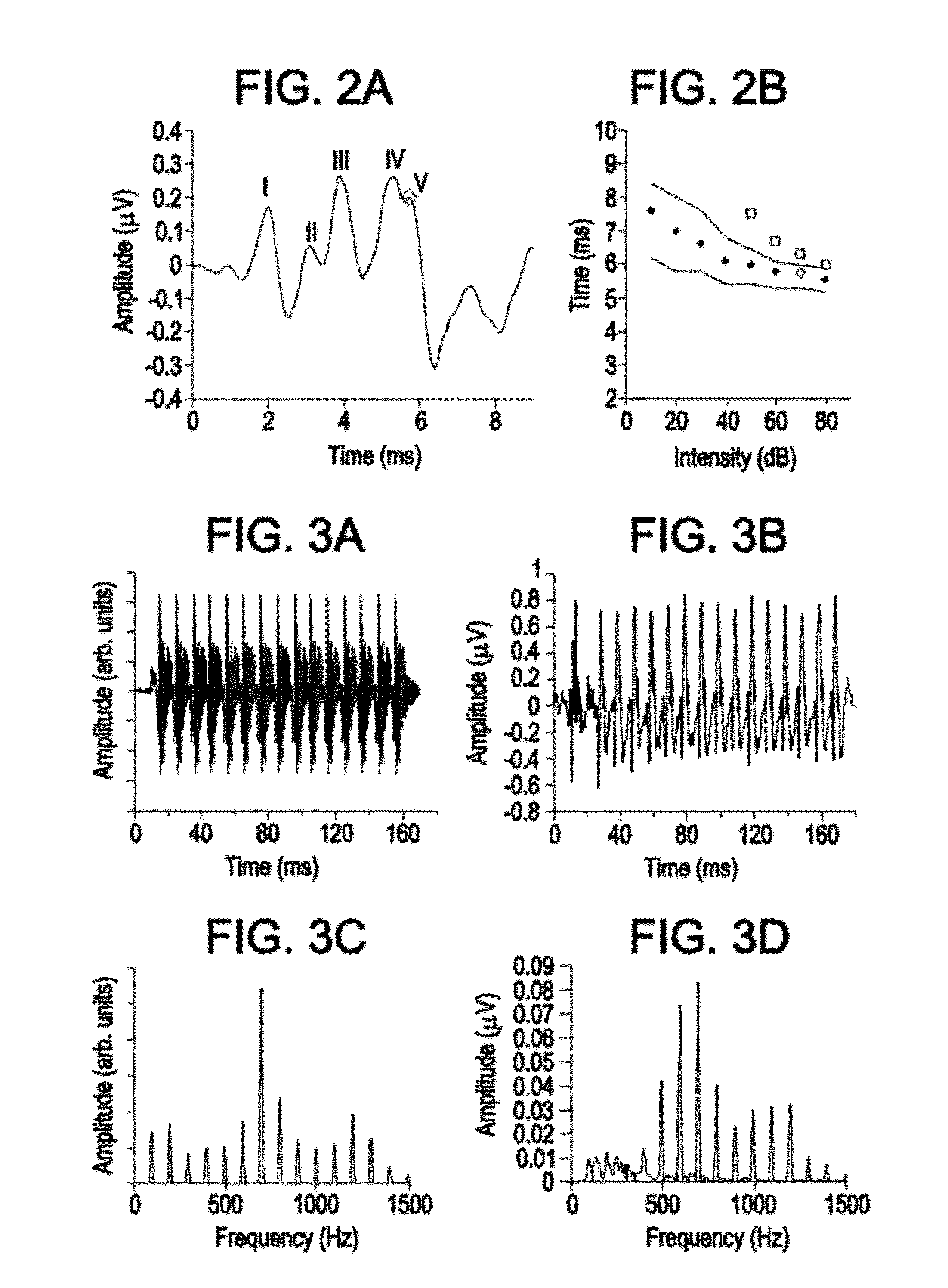Systems and methods for measuring complex auditory brainstem response
a brainstem response and auditory technology, applied in the field of auditory brainstem response, can solve problems such as recent proliferation of research
- Summary
- Abstract
- Description
- Claims
- Application Information
AI Technical Summary
Benefits of technology
Problems solved by technology
Method used
Image
Examples
example stimuli
[0123
[0124]In certain examples, because the cABR is sensitive to subtle acoustic deviations, synthetic speech can be used to create stimuli that are identical except for the trajectory of the second formant. By isolating the stimulus differences to a single acoustic cue, something that is not possible with natural speech, transmission of this particular stimulus feature by the nervous system can be captured, and this feature is important for differentiating stop consonants.
[0125]The syllables [ba], [da], and [ga] can be synthesized using a cascade / parallel formant synthesizer (SENSYN speech synthesizer, Sensimetrics Corp., Cambridge Mass.) to differ only during the first 50 ms, during which each had a unique frequency trajectory for the second formant, for example. In certain examples, the stimuli are otherwise identical in terms of their duration (170 ms), voicing onset (at 5 ms), fundamental frequency (F0), as well as their first (F1) and third-sixth formants (F3-F6). In certain e...
example processing
[0273 System
[0274]FIG. 16 is a block diagram of an example processor platform 1600 capable of executing instructions to implement the example systems, methods, views, and analysis recited herein. The processor platform 1600 can be, for example, a server, a personal computer, an Internet appliance, a set top box, or any other type of computing device.
[0275]The processor platform 1600 of the instant example includes a processor 1612. For example, the processor 1612 can be implemented by one or more microprocessors or controllers from any desired family or manufacturer. The processor 1612 includes a local memory 1613 (e.g., a cache) and is in communication with a main memory including a volatile memory 1614 and a non-volatile memory 1616 via a bus 1618. The volatile memory 1614 may be implemented by Synchronous Dynamic Random Access Memory (SDRAM), Dynamic Random Access Memory (DRAM), RAMBUS Dynamic Random Access Memory (RDRAM) and / or any other type of random access memory device. The ...
PUM
 Login to View More
Login to View More Abstract
Description
Claims
Application Information
 Login to View More
Login to View More - R&D
- Intellectual Property
- Life Sciences
- Materials
- Tech Scout
- Unparalleled Data Quality
- Higher Quality Content
- 60% Fewer Hallucinations
Browse by: Latest US Patents, China's latest patents, Technical Efficacy Thesaurus, Application Domain, Technology Topic, Popular Technical Reports.
© 2025 PatSnap. All rights reserved.Legal|Privacy policy|Modern Slavery Act Transparency Statement|Sitemap|About US| Contact US: help@patsnap.com



